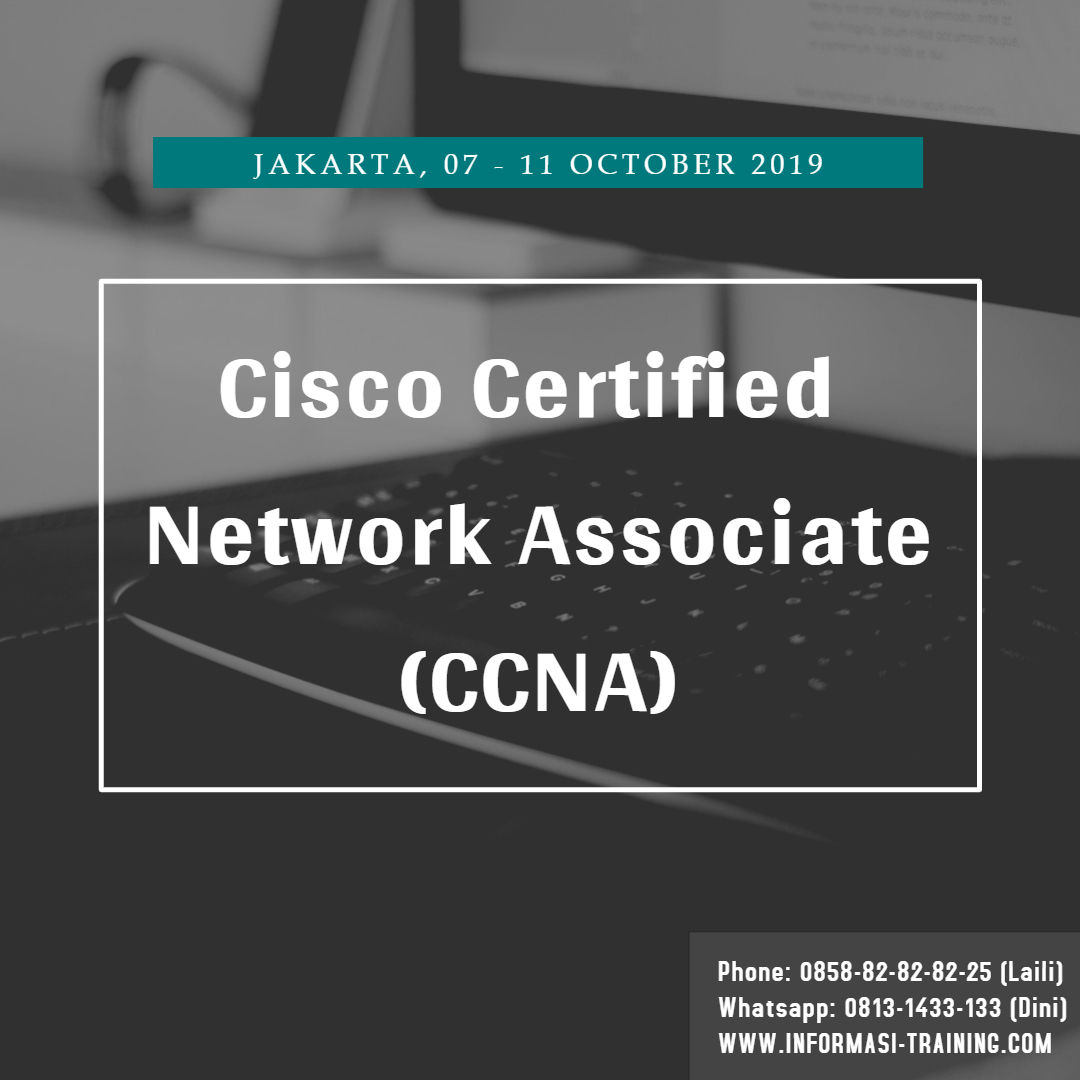CCNA – Cisco Certified Network Associate
EVENT
01 – 05 February 2021 | Rp 10.000.000 at Kuningan, Jakarta Selatan
15 – 19 March 2021 | Rp 10.000.000 at Kuningan, Jakarta Selatan
26 – 30 April 2021 | Rp 10.000.000 at Kuningan, Jakarta Selatan
Jadwal Training 2021 Selanjutnya …
CCNA – Cisco Certified Network Associate Course Description
Cisco Certified Network Associate (CCNA) Routing and Switching is a certification program for entry-level network engineers that helps maximize your investment in foundational networking knowledge and increase the value of your employer’s network. The CCNA Routing and Switching validates the ability to install, configure, operate, and troubleshoot medium-size routed and switched networks.
This course teaches learners how to install, operate, configure, and verify a basic IPv4 and IPv6 network, including configuring a LAN switch, configuring an IP router, identifying basic security threats, understanding redundant topologies, troubleshooting common network issues, connecting to a WAN, configuring EIGRP and OSPF in both IPv4 and IPv6, understanding wide-area network technologies, and getting familiar with device management and Cisco licensing.
CCNA – Cisco Certified Network Associate Course Objectives
Upon completion of this course, participants will be able to:
- Describe network fundamentals and build simple LANs
- Establish Internet connectivity
- Manage network device security
- Describe IPv6 basics
- Troubleshoot VLAN issues, explain how STP works, configure EtherChannel, and understand the idea behind Layer 3 redundancy
- Troubleshoot IP connectivity
- Define the characteristics, functions, and components of a WAN Configure and troubleshoot EIGRP in an IPv4 environment, and configure EIGRP for IPv6
- Configure, verify, and troubleshoot multi-area OSPF
- Describe SNMP, syslog and NetFlow, and manage Cisco device configurations, IOS images, and licenses
Prerequisites
- Basic computer literacy
- Basic PC operating system navigation skills
- Basic Internet usage skills
- Basic IP address knowledge
Who Should Attend
- Individuals seeking CCNA Routing and Switching certification
- Network Specialists, Network Administrators, and Network Support Engineers with 1-3 years of experience
Certification
CCNA certification exam 200-120 will be conducted on the last day of training. Participants need to pass the online Pearson VUE exam to receive CCNA certification.
Agenda Cisco Certified Network Associate: CCNAX v2.0 Routing and Switching (CCNA)
| Durations |
Full Day Training – 5 Days (09:00AM – 05:00PM) |
| Schedule |
11 – 15 September 2017 |
| Venue |
AXA Tower, Kuningan City Jl. Prof. Dr. Satrio Kav.18, Setiabudi – Kuningan |
| Price |
IDR 10.000.000 |
| Packages |
|
| Course Modules | Module 1: Building a Simple Network
Module 2: Establishing Internet Connectivity
Module 3: Managing Network Device Security
Module 4: Introducing IPv6
Module 5: Building a Medium-Sized Network
Module 6: Troubleshooting Basic Connectivity
Module 7: Wide Area Networks
Module 8: Implementing an EIGRP-Based Solution
Module 9: Implementing a Scalable OSPF-Based Solution
Module 10: Network Device Management
Module 11: Labs
|
SCHEDULE
This event will be held on the specified venue and schedule below:
- 01 – 05 Februari 2021
- 15 – 09 Maret 2021
- 26 – 27 April 2021
- 14 – 18 Juni 2021
- 26 – 30 Juli 2021
- 02 – 06 Agustus 2021
- 13 – 17 September 2021
- 04 – 08 Oktober 2021
- 08 – 11 November 2021
- 20 – 24 Desember 2021
- Time: 09.00 AM – 05.00 PM
- Axa Tower 37th Floor, Kuningan City
CCNA | Cisco Certified Network Associate : CCNAX v2.0 Routing and Switching

